Technology for seniors can improve life quality
In the first blog post about digital seniors, I explained that many seniors have had major challenges in life, particularly during the Covid-19 pandemic. However, more seniors are increasingly using internet services, and as a result, many of them have experienced a better quality of life. But there are other forms of technology that would improve their life even further, which I’ll outline in this follow up post. And how can we create a better life for seniors? Let’s find out.
Many times the most important factor is not the new technology solutions themselves, but how companies and institutions shape this technology, and adopt it to seniors’ preferences and needs. It needs to be done in a way that seniors enjoy using it, appreciate and consequently use it more. Only then they will we be able to see the positive effects and benefits from these new tech solutions.
The continued focus on young-old seniors
The insights from this second blog post are primarly based on an Ericsson ConsumerLab study, which highlights so-called ‘young-old’ seniors aged 65-74 years, who use the internet. We call them digital seniors. These insights are from 2019, just before the Covid-19 crisis started. The study covered eight countries: the US, Brazil, Germany, Italy, UK, Sweden, China and Japan. The results from the study represent approximately 200 million digital seniors.
This blog post will also include some insights from an extensive ConsumerLab Covid-19 study conducted in April 2020, which analyzed seniors’ attitudes during the pandemic.
Let’s leave the methodology behind and look at the insights!
How new tech solutions can target seniors: five key areas
Firstly, it’s crucial to identify the most important areas for seniors that reflect the concept of having a good life during retirement. In this case, we have identified; the home life, seniors’ wellbeing, their social life, chance to be mobile and to entertain themselves, as infotainment. Somehow, these five important areas mirror the so-called Afflictions flower presented in the first blog, where we unpacked seniors’ key challenges.
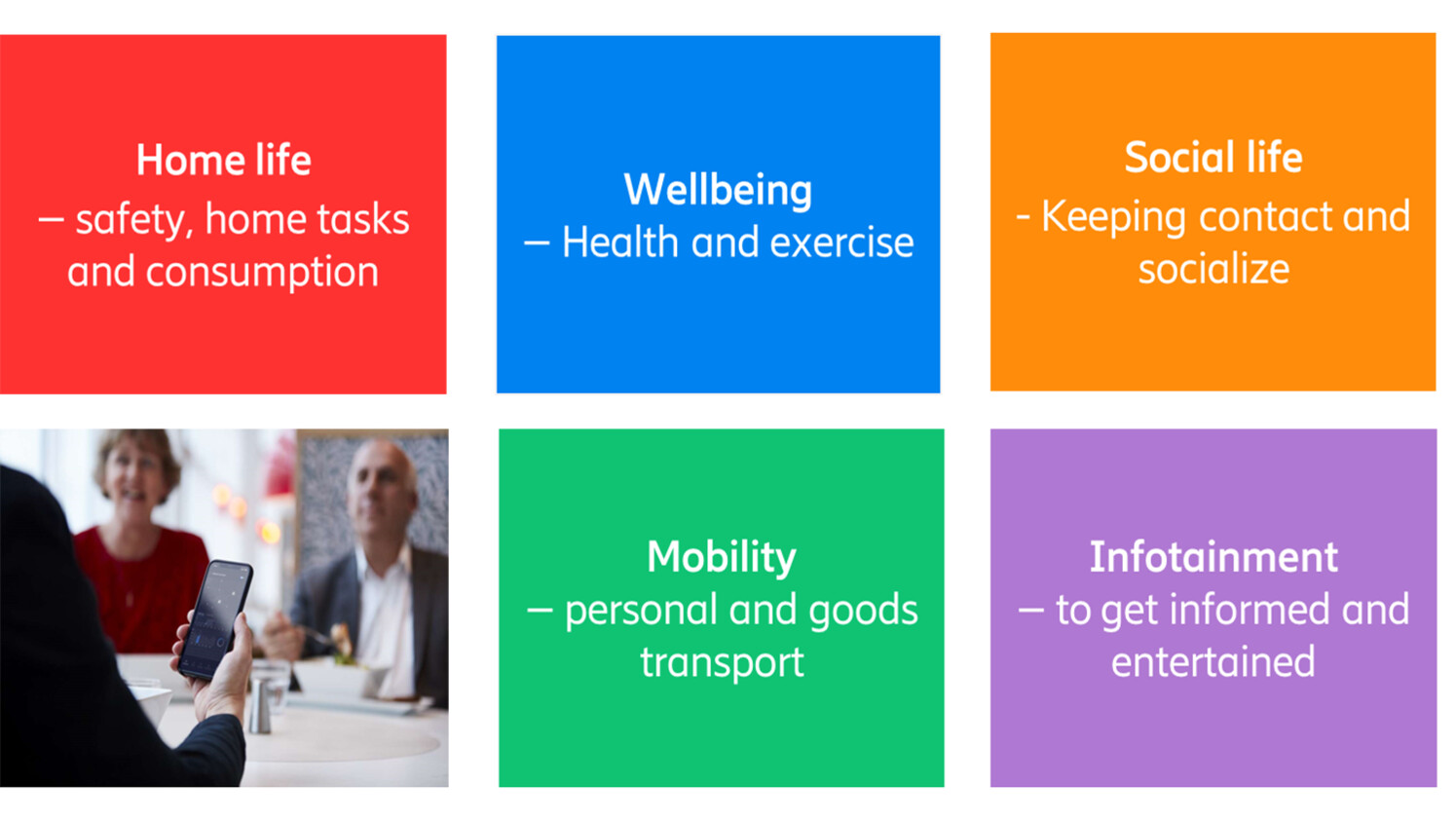
Figure 1: five important areas identified for seniors where tech solution could play an important role for better life quality
The first area to explore is home life. As was covered in the first blogpost, seniors are likely to spend more time at home the older they get. That’s why it’s important to investigate which tech solutions would best fit their needs at home.
Wellbeing is probably the most important area not only for everyone, but for seniors in particular, since they face a higher risk of disease and are generally ‘slowing down’. This area also includes healthcare and exercise to prevent certain medical issues when ageing.
Social life is important for all people. But for younger generations it comes more natural, as they can spend time in many different areas and forums where they interact with other people – for example at work, in restaurants and bars, when doing different activites and so on. Seniors tend to have a narrower social life. Friends might start to become sick, they might be facing dementia, or they may simply be more tired of frequent social activities. Social life also includes contact with the family, but they may live too far away for daily interactions.
Seniors´mobility is crucial for them, to be able to be feel free and be able to visit somewhere or person. In all aspects this has decreased during the pandemic, both in terms of walking around the neighborhood, and travelling to distant places with different forms of transport.
Last but not least, it’s still important for this generation of seniors to have fun late in life. In this case, infortainment and to enjoy life is important for this baby boomer generation, compared to previous generations who have traditionally taken a more conventional role as a senior. Age is just a number for this newer vital generation of grandparents.
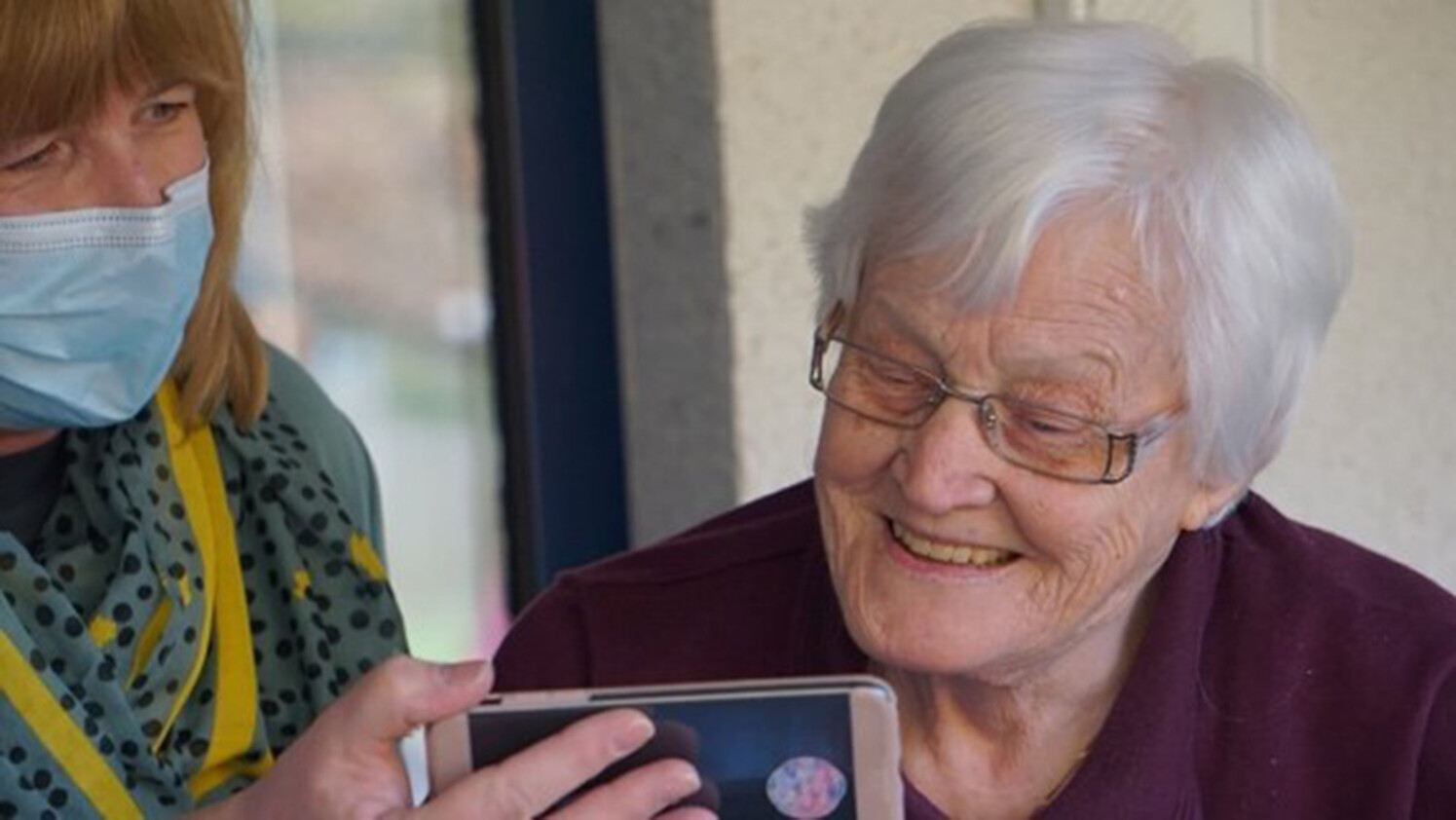
Read the report
Read the full report on digital seniors and the tech solutions to improve their quality of life.
Click here
Home life; an easier life for seniors with selected tech solutions
Our study shows that many digital seniors think that they’ll spend more time at home the older they get. Being at home more means that it would be a good idea to improve different aspects of the home infrastructure. Different tech solutions that would make life better for seniors.
Remember that this generation was actually the first to fill up their homes with different forms of technology to make life easier, like a washing machine, dishwasher, refrigerator, freezer, stove, phone, TV, or stereo. This also includes small forms of kitchen technology like a coffee machine, toaster, or a bread maker. So it’s not a completely new concept for them to aquire tech solutions at home to make life easier. However, new technology solutions include:
- Better communication. With the pandemic crisis, seniors understand the consequences of meeting friends and family, since they’re in the risk group, and are more likely to isolate. This means there’s a need for better communication tools aimed specifically at them. As I mentioned in the first blog post, many seniors have increased their use of video calls over the years to talk to, and see, family and friends. The next step from this digital meeting would be to virtually meet in 3D. 3D-calling holograms are currently being developed and makes it possible to experience meetings as live as possible without meeting physically.
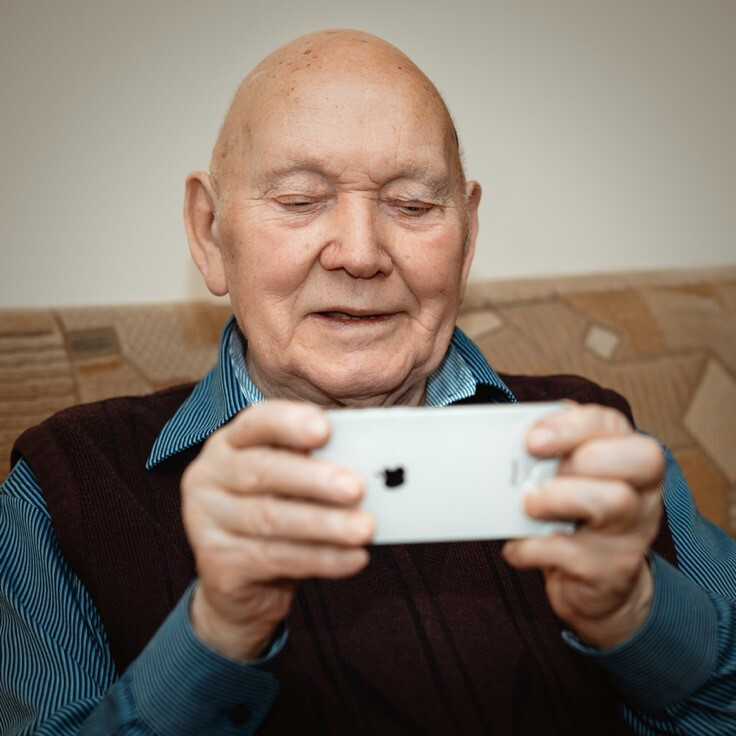
Caption: As many as six in 10 digital seniors are open to use improved communication technology like a 3D-calling hologram to communicate with friends and family.
This is a development that seniors like. Perhaps not surprisingly, as many as six in 10 digital seniors are open to use improved communication technology like a 3D-calling hologram to communicate with friends and family. This percentage would probably increase further today, since this measurement was made before the Covid-19 crisis
- Easier consumption. Another technology that would be attractive for the digitals seniors involves AI and automated consumption. About half of them would accept at least one type of automated consumption service. I previously highlighted that many seniors think it’s boring to purchase groceries. Also, many experience the increased lack of mobility the older they get, which makes them more interested in services that simplify their life. Already now during the pandemic, seniors have started, or increased their purchases online due to lockdowns. With AI, consumption would rise to a new level. AI in a household could place orders for products and services automatically, without seniors even needing to know what is missing or what needs to be purchased. This could come in the form of an active and living refrigerator, for example. Remember we already have automated forms of payments today with electricity bills, for example. This already improves life for older people regarding private finances.
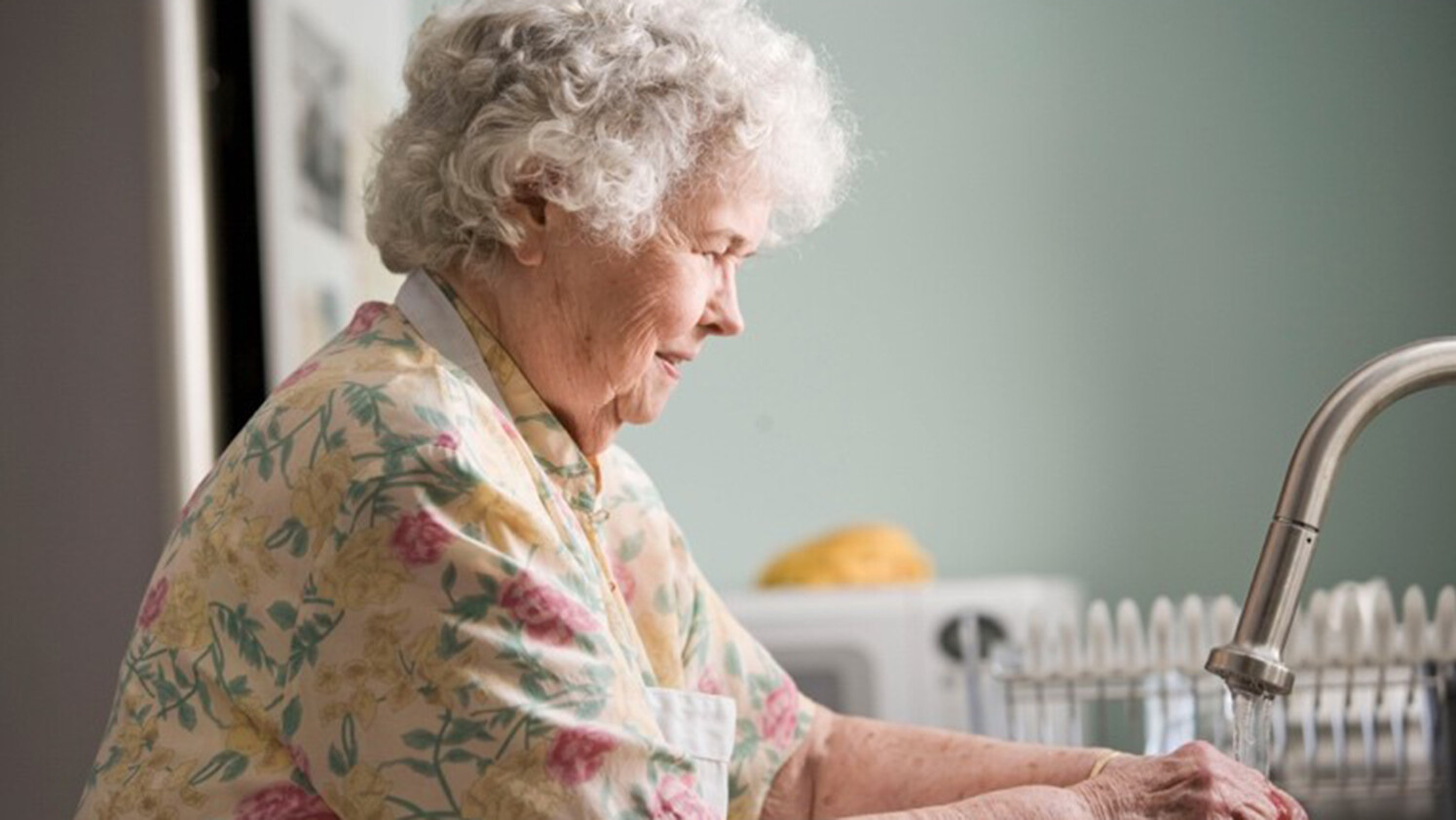
Caption: Lack of mobility means seniors are much more interested in how services can simplify their lives. Image source: CDC, Unsplash.
- Better functionalities. Regarding devices, different types of buttons are not always made for all people. These types of buttons can be found on a phone or smartphone, a stove, a digital temperature system at home, or on a remote control. This problem compounds with seniors who have poor eye sight and coordination. The possibility of using your voice to govern different technologies at home – or just to receive the news and weather, missed calls or messages – is interesting. In this case, four in 10 seniors see the benefit of home assistant speakers, which could help them simplify their life at home.
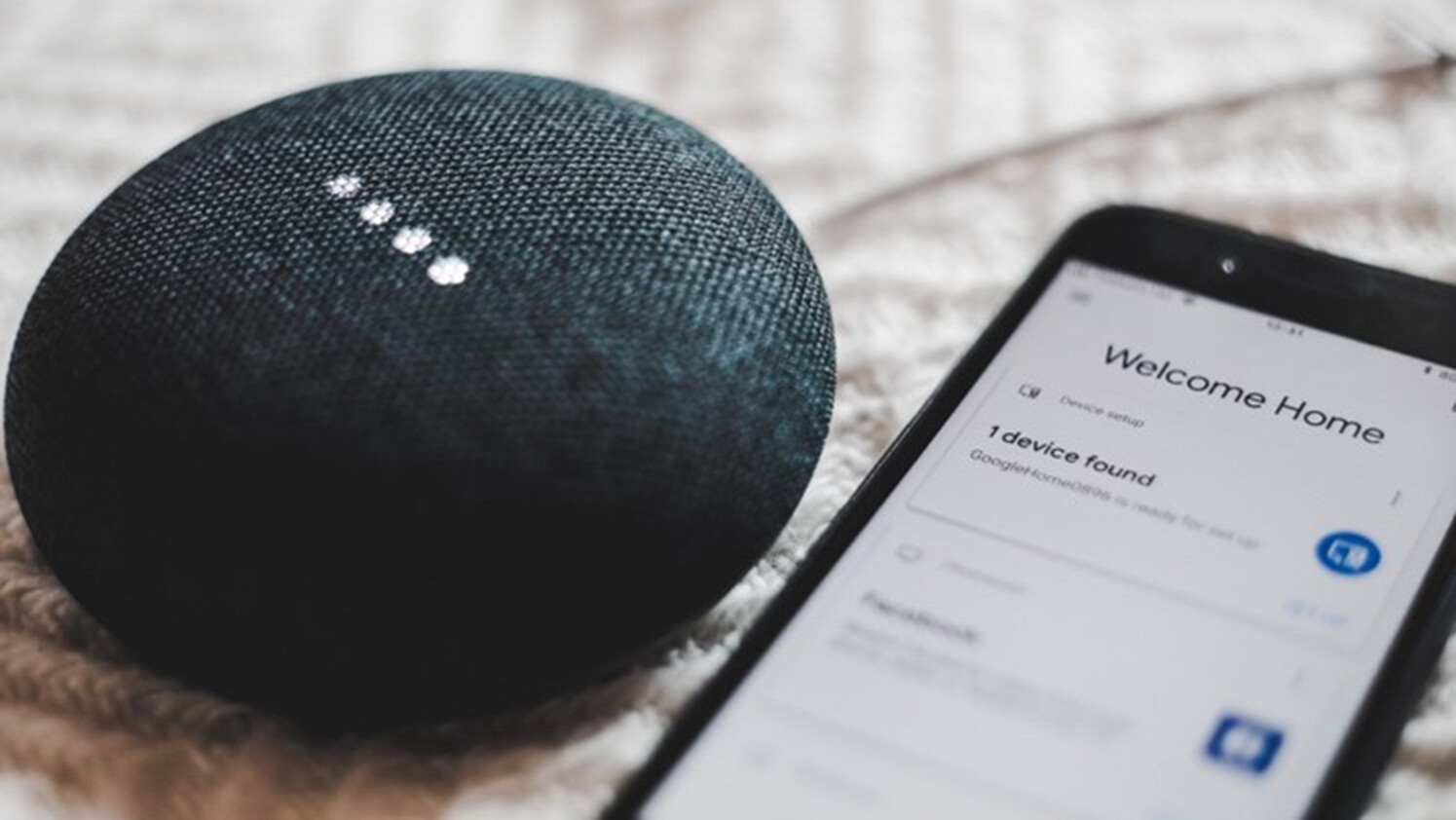
- More convenience. We also noticed that seniors want things to be easy to use, easy to order, easy to purchase and so on. We tested their interest in a 5G smart home solution, consisting of a bundle of services like smart lighting, thermostats, water control, door locks and surveillance cameras – many services to make life easier and have better control of consumption of water and electricity, for example. In this case, they would all be grouped in one single bundle, which means one supplier and one service contact for all this home technology. The interest was stunning. As many as four in 10 of the digital seniors thought it would be a good idea. Seniors don’t want to spend time chasing different companies and service people to fix things at home.
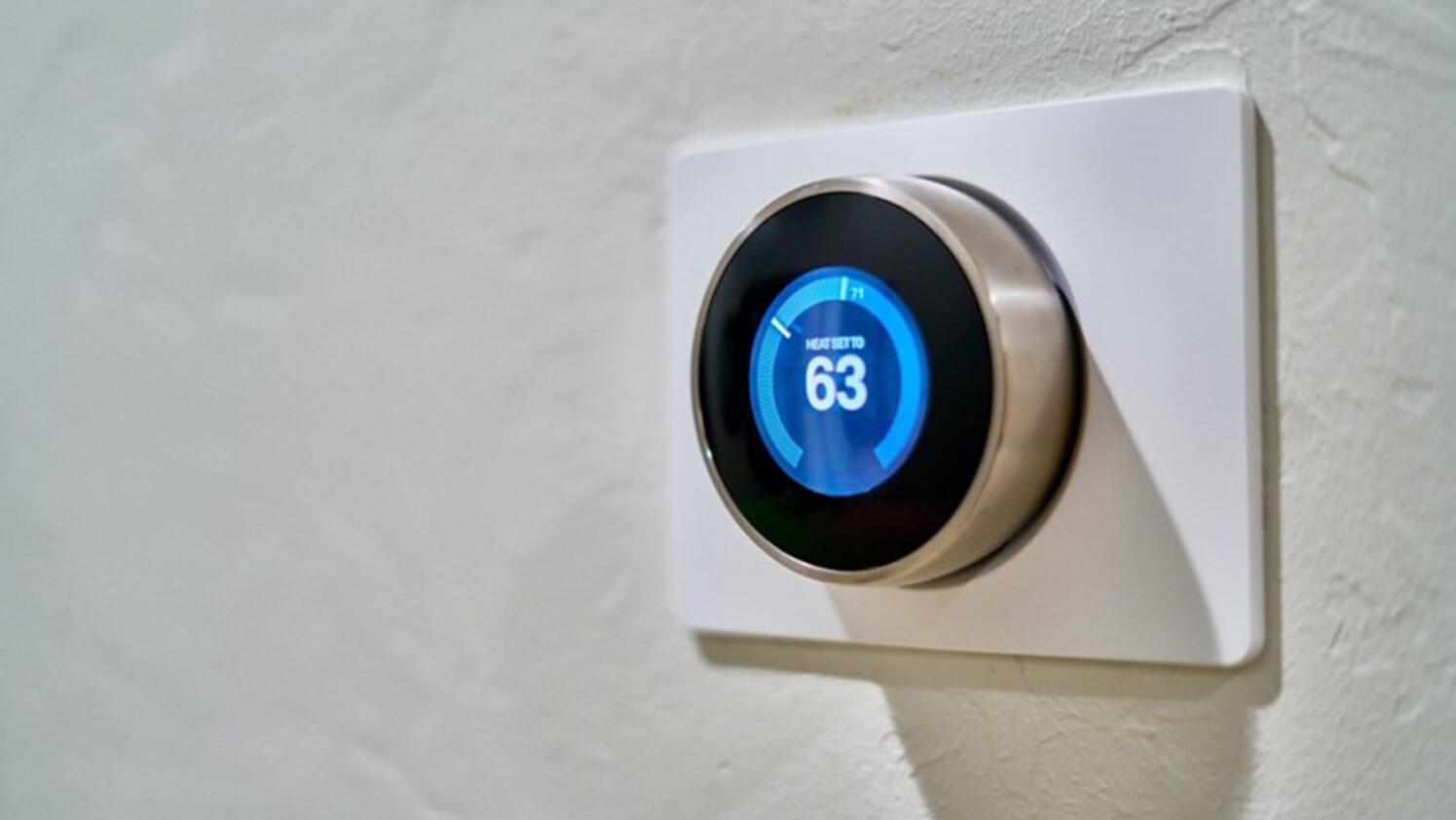
Caption: Four in ten of digital seniors thought a 5G smart home solution would be a good idea. Source: Dan LeFebvre, Unsplash.
In the study, we found three things that were specifically important factors for them to more easily adopt smart home solutions in their home:
- Trust in handling personal data. For example, only two in 10 digital seniors trust private security companies to manage their personal data. There is a higher trust in other actors like communications service providers, mobile handset providers, IT companies or internet providers. But the highest trust in this case is for government/ states or banks to handle their personal data. This should be taken into account when handling seniors’ personal data.
- Trust in AI taking descisions. Three in 10 seniors don’t trust AI. They fear that AI will order the wrong products. They also wonder how decisions are actually made. What are they based on – the previous purchase? It will be important to be transparent and inform seniors how AI consumption works to get them on board.
- Lack of quality or solving the problem fully. Tech solutions are not always perceived as being good quality, even though the solution may be perceived as such. For example, four in 10 digital seniors who don’t have a security alarm, have not installed it because they don’t think it would make them safer at home, since burglars could potentially break in anyway. Here, the quality or the tech solution are not fully solving the problem. As a result, it’s important that services are tested and work properly before they’re presented to the suspicious seniors.
Social life; a future companion can be a robot
A key fear seniors have is being alone, or feeling more alone the older they get. Being a social species, humans always seek social interactions with other people. Our study among digital seniors before the pandemic, showed that half of those who spend most of their time feeling lonely today (who also expect to be lonelier the older they get), show more interest for social robots or robot functions. Looking at the different senior segments presented in the first blog post, the ‘ageing techies’ are even more interested in social robots than others, since the majority of them, six in ten, are interested in at least some kind of social robot function in their home.

Would a social, home-based robot combat a fear of loneliness?
The most wanted situation for a social robot is to tackle the feeling of loneliness. Another situation that feels very relevant is to have a social robot for cleaning the home, or cooking. For seniors, a cleaning robot or chef robot are as relevant as a social robot.
But the study also reveals that seniors have certain requirements on the social robot. When it comes to particular capabilities, the study shows, somewhat surprisingly, that good mobility is very important, together with being intelligent enough to hold good conversations. This outperforms other characteristics like having a good vocabulary, or even humor.
Further down the ranking list over personalities we found that four in 10 of the seniors also thought that the ability to react to emotions and being able to show emotions are important. Interestingly, two in 10 mention other advantages of having a robot companion, rather than a human companion. Not only is it easy to have a good seamles relationship with a social robot, also the robot will never leave them as a partner.
Barriers. When it comes to the barriers of a social robots at home, half of the seniors simply don’t like robots taking on a human role, too much. Robots should be robots. On the other hand, robots will never be human enough to really be able to socialize with them. They will always just be robots. And a robot they can´t trust. Who is deciding what they’ll say or do? With AI, maybe they’ll start to do things on their own, things they’re not programmed to do, but rather act based on what they’ve learned to do. Seniors need to be informed what actually decides what the social robot will say or do.
Figure 2, below, shows how digital seniors aged 65-74 years have many requirements for accepting social robots.
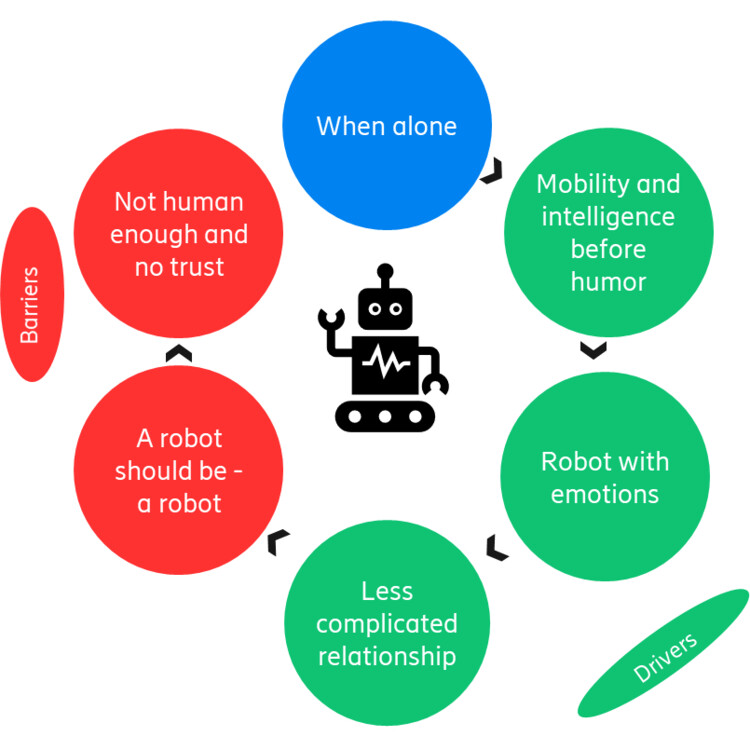
There are many requirements put on social robots to fit seniors’ needs.
Mobility; ageing is obvious since convenience and safety are top of the list
In the previous blog post, research revealed that half of the digital seniors feared a lack of mobility when they got older. One aspect of this includes physical and phychological limitations when driving a car. In the ConsumerLab report, Augmenting the daily commute, different services related to commuting were tested on city seniors across megacities around the world. The results showed that services specifically related to safety and convenience were the most important.
Seniors preferred safety services like, ‘Distracted driver detection’ which was the single most interesting service – a safety service. ‘Assistant drive’ was the third most interesting service. This leans towards a preference for a type of autonomous driving. The convenient ‘Car software update’ function was the second most interesting service, a typically convenient and automated service.
Further, ‘In-vehicle continual connectivity’ was one of the relatively more interesting services. Figure 3 below also shows that seniors expect these relatively more interesting services to be on the market before other services they are less interested in.
It shows how city seniors aged 65-74 years prefer safety and convenience services. Interest is on the y-axis and the estimation of reaching mass market is on the x-axis.
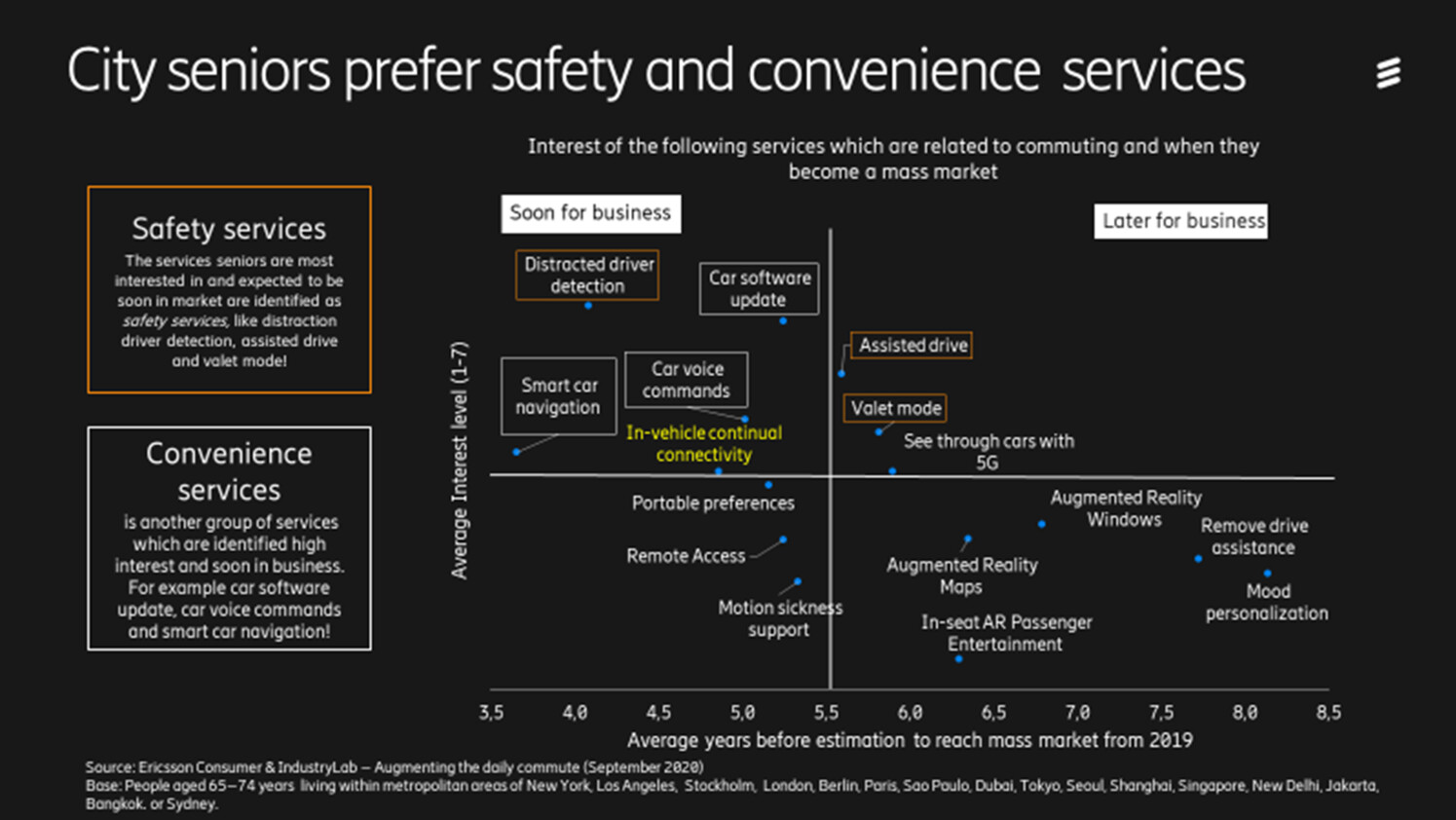
Figure 3: City seniors prefer safety and convenience Source: Source: Ericsson Consumer & IndustryLab – Augmenting the daily commute (September 2020) Base: People aged 65–74 y.o. living within metropolitan areas of New York, Los Angeles, Stockholm, London, Berlin, Paris, Sao Paulo, Dubai, Tokyo, Seoul, Shanghai, Singapore, New Delhi, Jakarta, Bangkok.
In the same study, digital seniors stated that they expect to use public transport as their main form of transport five years from now. More than half of the seniors in these metropolitan cities see themselves commuting with public transport. This is a clear sign of appreciating safety in terms of fewer risks of car accidents, but also higher convenience and comfort as a passenger on a train or bus, including being able to to other things while commuting.
What is more interesting is that, after public transport, a car, and walking, the fourth most common mode for city travel among seniors is traveling with minibuses as autonomous shuttles!
Regarding new transport solutions, one in three seniors are also open for other types of new transport solutions like personal autonomous cars, e-scooters, drones, robo-taxis, ride-hailing cars, and so on. Safety and convenience will be important aspects if they’re to be successful modes of transport for seniors.
Also, seniors separate from the average of the population by more often choose public transport as their transport mode in 2025. Seniors also think that they’ll walk more than that of the average citizen. This could be seen as a sign for how important seniors think it is to stay fit and healthy through daily and regular exercise.
Health; optimistic views on using tech solutions for healthcare and exercise
Many digital seniors fear getting sick, so they often do what they can to stay healthy and live a fruitful life. We also saw in the previous blog post that many have become more digital. They spend more time online, not selldom for healthcare and exercise reasons.

Caption: Maintaining a healthy lifestyle is crucial for many digital seniors. Source: Charles Cheng, Unsplash.
Wearables. Something that we noticed is the strong interest for measuring their health, for example, gathering and analyzing their health status, and act on medical data. In a previous study in 2018, we noticed a big interest for health wearables. Already then, some seniors used fitness bands. We tested this interest for 5G health wearables, which could monitor the heart rate, but also switch to an emergency alarm. It worked for both health purposes, and if the user was an emergency situation in the city or out in the woods. The wearable could also measure the skin temperature, check respiration and blood pressure. The data could then predict the onset of infection and inflammation.
As many as half of the digital seniors were very interested in a solution like this. Today, there are many similar watches like this on the market – the Apple watch, for example, with many of the same features.
Online healthcare consultations. In the previous blog post, I mentioned that digital seniors have become more active on the internet during the pandemic concerning health; there have been increased purchases of medical supplies online, and an increased use of health consultation apps. Even before the pandemic, almost four in 10 thought that online healthcare consultations would become more popular than physical visits to the doctor for them as seniors. In addition, 25 percent of respondents were positive about setting up virtual appointments automatically, based on the outcome of their health tracker.

Almost 40 percent of seniors think online healthcare consultations will become more popular than physical visits. Source: National cancer institution.
Mobile medical clinics. New solutions like this would be welcomed, since many are aware of the problems, such as waiting times, when visiting the doctor or a hospital for minor things that can’t be solved online. Already before the pandemic, four in 10 stated that instead of going to a medical clinic, they’d love to be able to call for an autonomous clinic to ‘pop up’ outside their door (where they could leave blood samples, for example.)
Robots in hospital. Insights from this study shows how seniors are positive towards different tech solutions within the area of healthcare at hospitals. About half of the digital seniors are also positive, and believe that intelligent health robots could help take care of patients in the hospital – taking measurements, for example, which would reduce the amount of time medical staff would need to spend with patients.
Implementation. This subject becomes more interesting as we dive a little deeper into the specific needs that seniors have, in this case for health wearables. Discretion is the most important feature for health wearables for most seniors, followed by easy to wear and being able to keep it clean, together with it being light weight. They don’t want to give off an image that they need to track their health due to bad health, even though it should work as a proactive, rather than a reactive, wearable.
When seniors were asked what kind of wearable they would like to have, three in four answered, a wristband. This is relatively natural, since many seniors are used to wear a watch or a fitnessband on the wrist. But if we take their needs into consideration, it’s perhaps not surspring that two in three also said they’d like some kind of on-body device like earrings, glasses, contact lenses or devices on their clothes, or their body, like a tattoo.
If we go one step further and study their actual needs, it’s not surprising that one in four are also interested in hidden wearables, either hidden in clothes or even hidden under the skin, we call them in this study non-visible sensors. These actually would work best considering their needs; being discrete, easiest to wear, not need to clean, and being the leight weighted.
Having fun with VR – but utility is more important
Different VR and AR services have now entered the market, and have also sparked the interest of digital seniors. A majority of them, seven in 10, admit that they are interested in at least one type of VR/AR service. Many times, the interest also reflects their enthusiasm in other areas. Those who like to cook, for example, see the possibilities of learning new things to cook in VR/AR. Those interested in interior design see opportunities in being able to redecorate their home in VR/AR, and so on.
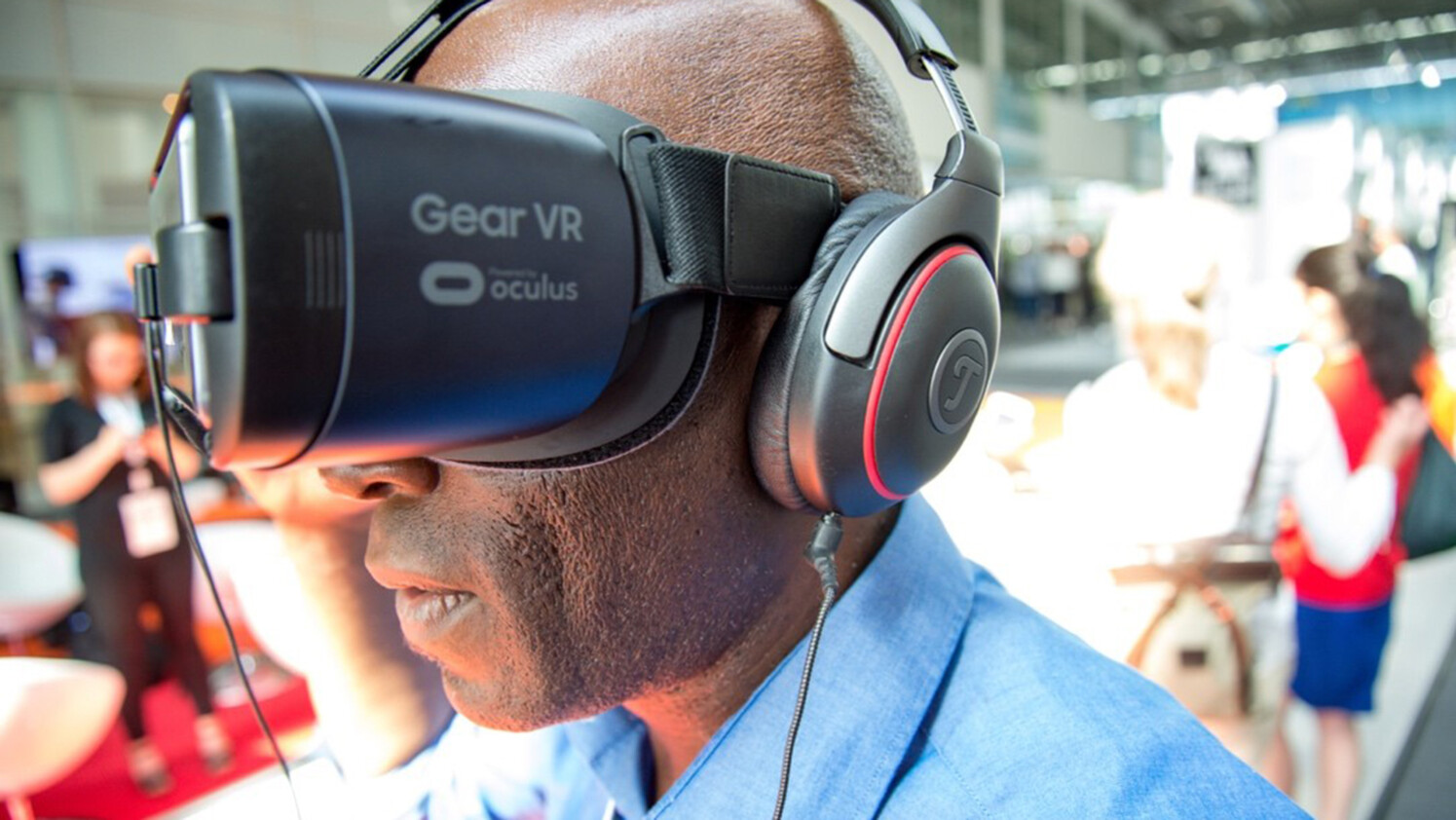
Caption: With the rollout of commercial VR/AR, more than 70 percent of seniors admit that they’re interested in VR/AR related services. Source: Stephan Sorkin
The single most interesting activity to do with a VR/AR headset is to learn a new skill or hobby. The interpretation of this is that utility comes before pleasure. Just having fun doesn’t seem to be the most important driver, even though they seek to have fun. There has to be something more in this to attract seniors.
So what kind of activities do they want to do with their VR/AR headset? About four in 10 seniors are interested in activities in this new digital world for decorating their home virtually, experiencing sports or concerts, upgrading their home maintance skills, or to travel with a headset. One in 5 also see other possibilities, like going to a virtual restaurant, trying out sports themselves or playing VR adventure games. These attitudes were present already before the pandemic, but they’ve likely increased with the pandemic’s development, including the isolated situations they have been in, alongside improved products on the market, with better headsets and better applications.
Figure 4, below, shows the different ways in which seniors aged 65-74 years would enjoy VR/AR.
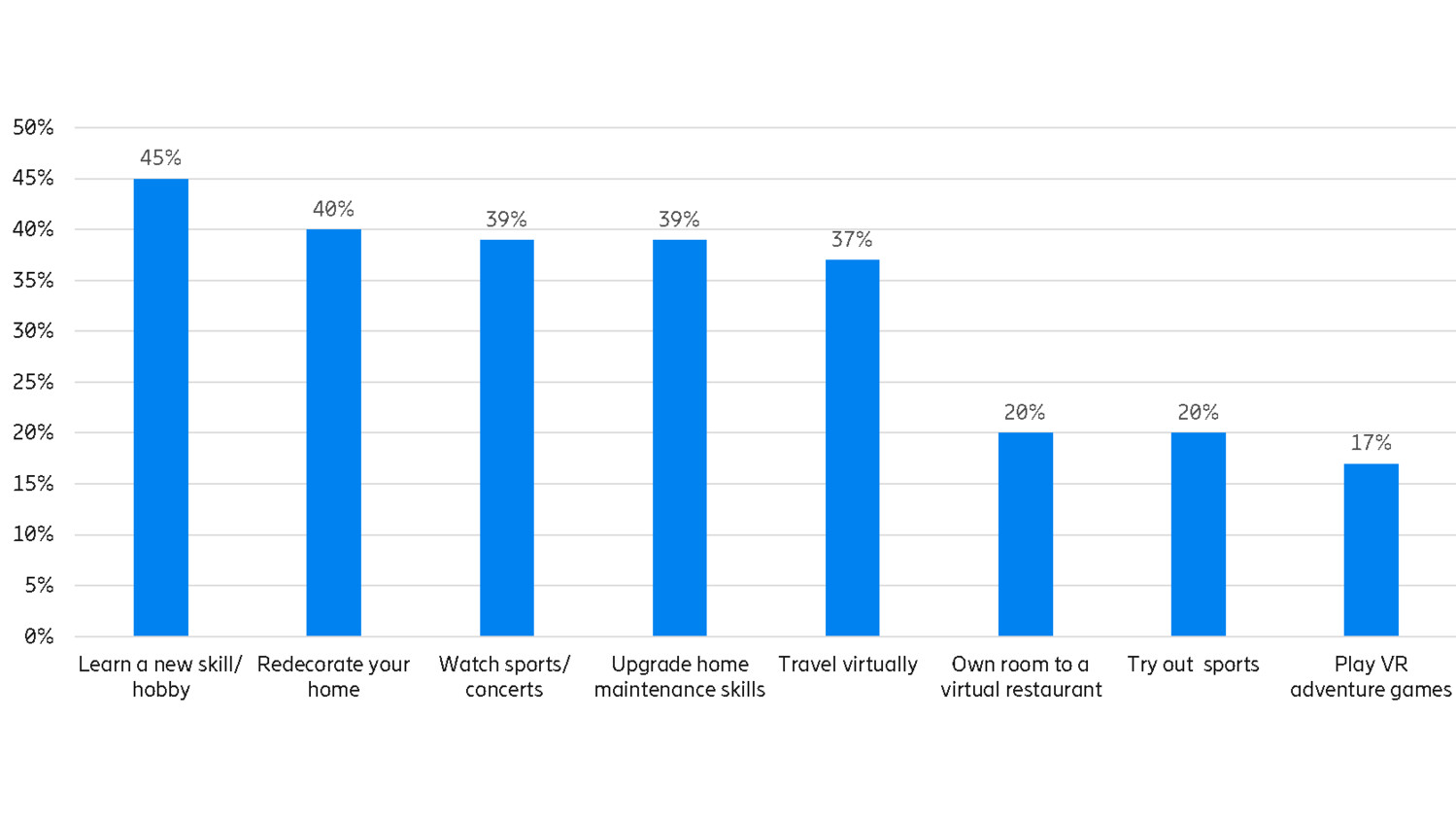
Figure 4: Interest for different VR/AR activities before the pandemic. Source: Ericsson ConsumerLab Analytical platform, Senior study, October 2019. Base: Online population aged 65-74 years within Canada, China, Germany, Italy, Japan, Sweden. UK and US
Seniors: more time, but not necessarily for tech solutions
We have seen this behavior before – when seniors (and even other less techy groups in society), have avoided using different online services, even though they would benefit from them, making life easier and more fun in the process. For this reason, we investigated the digital seniors to see what it is that holds them back from using technology more often, such as simply downloading and using applications on their smartphone. We thought that this would be somewhat similiar to not using new devices and applications more in VR/AR world.
Figure 5, below, shows the ranked list of perceived barriers to downloading and using applications on their smartphone more often than they already do.
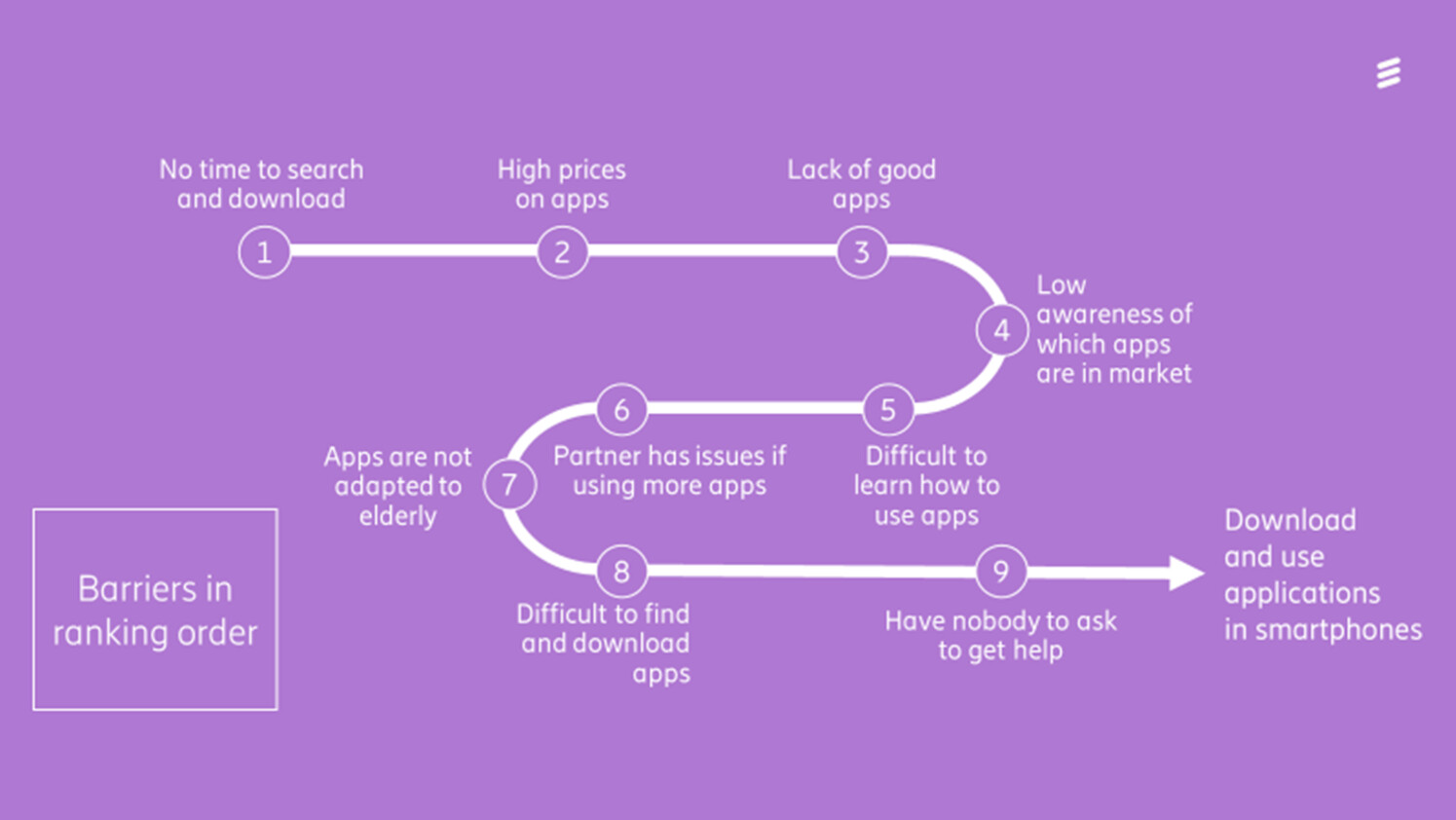
Barriers in ranking order
What we found was not one or two common obstacles, but over ten, if the open answers are included! This means that different seniors have different barriers. On the other hand, three in four seniors only picked one major barrier!
Surprisingly, the most common barrier is that seniors think they don’t have the time to search and download an application. Even though it’s the most mentioned barrier, only two in 10 mentioned it. You would d think that time is what all retired seniors have. But not this active generation of seniors. It seems than they want the app to work instantly. Pre-installed apps or simpler ways to download apps are crucial.
For some, of course, money is an issue. It can be the actual cost, but it can also be that among digital seniors this technology is perceived as more expensive than it actually is for them. Could it be lack of price information? Lower prices or a price range should help to avoid this price barrier.
There is also an awareness regarding applications in general that some digital seniors believe there are no good apps to download, and for that reason they don’t bother to search for apps. It could be down to a bad experience before searching for apps, or just a presumption about the app market.
The fourth most common barrier is low awareness of what apps are on the market. This is clear a message to all app stores to better inform people, in this case the seniors, about what is actually available in the app stores.
Not surprisingly, another barrier is low technology skills, needed to learn how to use apps. In this area, there’s the possibility to take courses for seniors to learn how to use devices and online services.
The seventh most common barrier is that the apps are not adapted for seniors, but for younger generations only. Barriers eight and nine are also about the difficulties of finding and downloading apps, or not having anyone to ask. Simply, apps have to be adapted to seniors’ level of technological understanding and their areas of interest.
Last but not least, the fifth most common barrier has nothing to do with tech skills or the app supply in the market. It’s when one person has issues if their partner uses the internet more and downloads more apps. One in 10 mention this barrier, and it is revealed most often by the senior segment called the ‘ageing techies’. Otherwise, this seniors segment, together with the segments ‘mature life connoissseurs’ and the ‘social parents’, mention the most that they have no time , compared to the ‘striving pensioners’ – a group that not surprisingly mentions high prices, along with the ‘traditional seniors’ who mention a lack of good apps. Are the apps too modern for this senior group?
Respect for seniors’ needs could triple uptake of tech solutions
ConsumerLab has estimated what the uptake of these tech solutions would look like, and how they would differ if seniors’ needs and attitudes were taken into consideration when developing and offering these tech solutions for market.
Firstly, in the chart below, there’s something we call the expected replacement growth, which is based on existing usage. The uptake simply depends on how many are using similar technology today, and what will replace their current technology used with the next generation of technology. The next level we call the usage growth due to interest. This means that the expected consumption of new tech solutions also includes the level of interest among seniors. If they are interested, they are a possible buyer and user of this tech solution. The third level, which we call possible additional usage growth, takes not only the seniors’ preferences and interests into account, but also makes sure that their needs are met, and removes the barriers that keep some seniors away from starting to use this technology.
Figure 8, below, shows a calculated forecast of tech solution adoption among digital seniors:
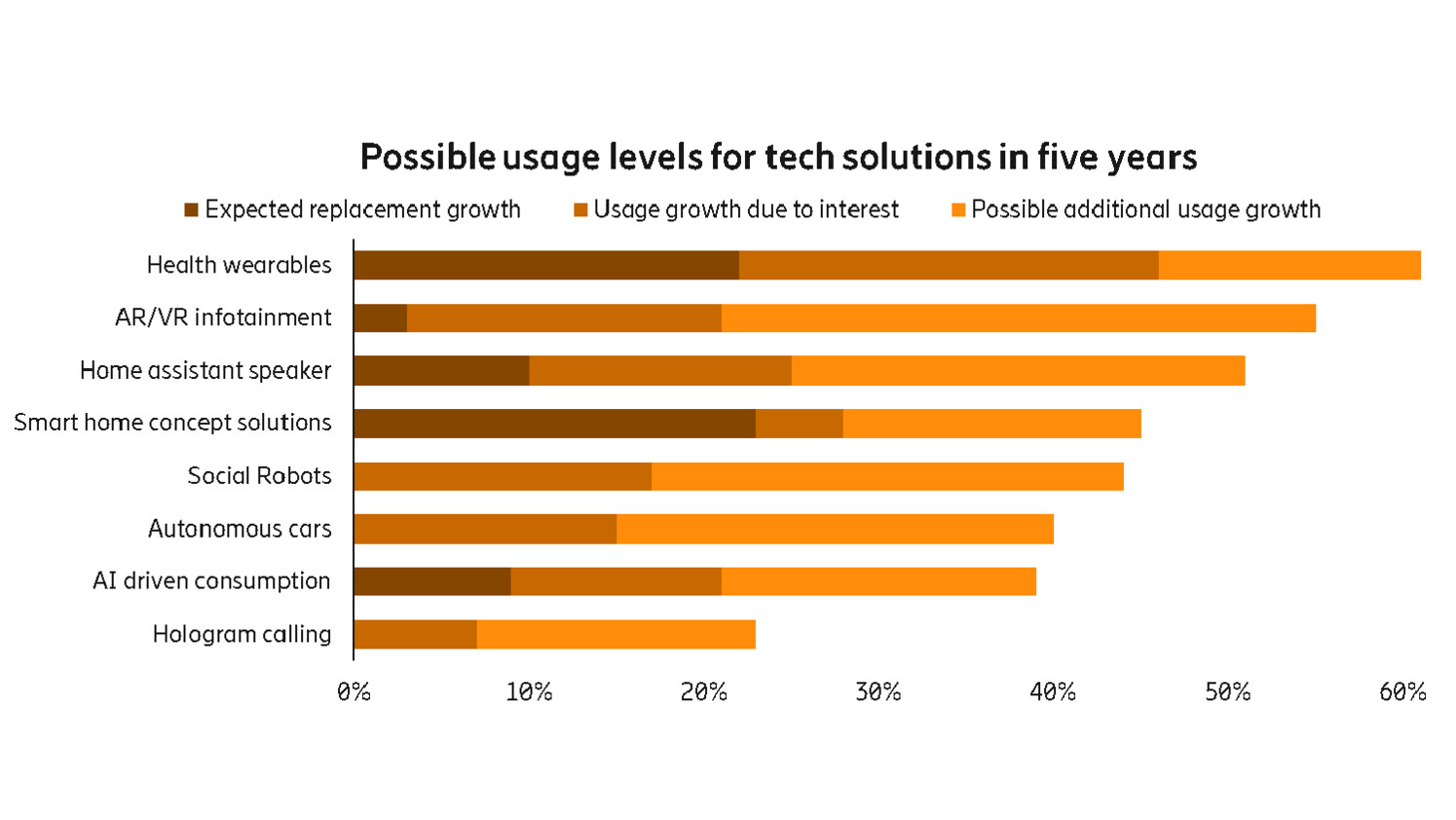
Figure 5: Calculated forecast of tech solution adoption among digital seniors. Source: Ericsson ConsumerLab Analytical platform, Senior study, October 2019. Base: Online population aged 65-74 years within Canada, China, Germany, Italy, Japan, Sweden, UK and US
Interpretation of the forecast. Let’s take the example of health wearables. Firstly, the current usage of a health wearable, or a similiar fitness band, today decides the estimated level of uptake of a new 5G health wearable. This possible usage would be the first part of the bar (dark red) which represents approximately 20 percent of the seniors. Secondly, if their interest in 5G health wearables is taken into consideration, the estimated uptake for a new 5G health wearable would reach almost 50 percent (includes the middle section of the bar). Thirdly, if seniors´preferences on how a 5G health wearable should work or look like is taken into account, the estimated uptake of a 5G health wearable could be about 60 percent among the digital seniors.
This way of calculating shows how important it is to adapt tech solutions to seniors´ situations, preferences and needs, so that as many digital seniors as possible will be able to take advantage of the new tech solutions brought to the market. Tech solutions are not only for those who are interested in tech in general, but should also be offered to as many seniors possible, both for individual gain, and for the value of society.
A reliable netwok for seniors on the public health agenda?
As we have seen in both blog posts about digital seniors, they’re becoming more and more digital, and they see the benefits of future technology. For example, as many as seven in 10 digital seniors believe communications technology is a good way for elderly people to overcome a crisis like the pandemic.
Seniors not only use new services online and see the benefits of different tech solutions, they also agree that during the pandemic, being connected to the internet is more important to them. As many as three in four of the digital seniors agree on this.
Of course, this raises questions of the current requirements on fixed and mobile networks, and whether they’re ensuring that seniors can use both existing networks and future technologies without any problems. This leads to the suggestion that technology for seniors should always be trustworthy, being online should be reliable, and the network they connect to should provide a certain level of low latency and high speed for future solutions like VR/AR, or a long distance operation by remote surgery via 5G, for example. Even at the beginning of the pandemic, half of seniors admitted that they wished 5G was rolled out faster.
Isn’t it time that reliable and trustworthy mobile and fixed networks for seniors are put on the public agenda, or at least on the public health agenda, for a better quality of life for seniors?
Want to know more?
Read the PowerPoint report on digital seniors
Read the first blog post of this series: Seniors and technology during Covid-19: the latest insights.
Explore ConsumerLab: discover more of our extensive consumer research.
Read out report, Connectivity in a COVID-19 world.
Here are our working from home best practices – for a pandemic that just won’t end.
Read our letter to G20: The road to recovery will be digital first.
Connect with Peter on LinkedIn.

